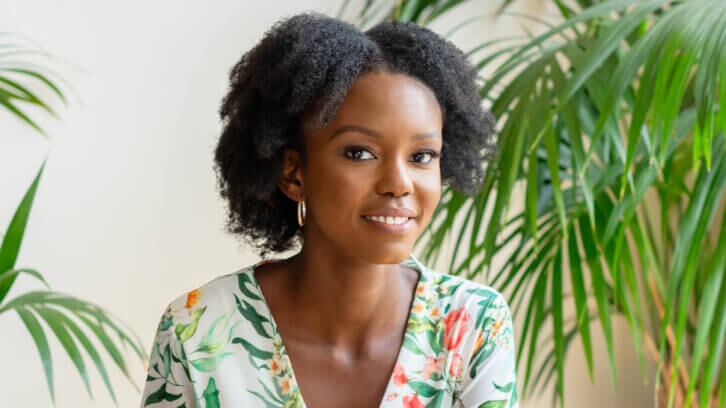They will want a more beautiful mind (as well as a beautiful face and body)
Awareness of the mind-body connection is deepening throughout society and Mintel believes that the trend of integrating mental wellbeing into the beauty industry will begin to mainstream in 2024.
“Technology will play a vital role in this trend, with artificial intelligence (AI), virtual reality (VR), and augmented reality (AR) applications personalising beauty experiences, tracking well-being metrics and offering virtual wellness consultations,” shared Mintel Director, Beauty & Personal Care Research Andrew McDougall.
“Wearable devices will provide real-time feedback on stress levels and skin health, strengthening the mind-skin connection. Advanced data analytics, DNA testing and personalised algorithms will enable brands to innovate customised beauty products and regimens tailored to individual mental and physical needs,” he continued.
“This trend will drive scientific research in psychodermatology and neurocosmetics, leading to evidence-based practices and products. Through this trend, brands have the potential to shift consumers towards prioritising holistic well-being, including integrating mental well-being practices into daily life and promoting a balanced and mindful approach.”
They will be feeling pretty greenwashed out
Consumers are ‘greenwashed-out’ and pushing environmental responsibility back onto businesses, according to Euromonitor’s Client Insight Research Manager, Stephen Dutton.
He said that people have been taking steps to live sustainably but question whether companies and governments are using all possible resources to make a true difference.
“They know their eco-friendly choices help to an extent, but real change needs to be a collective effort. Consumers are pushing the responsibility back on businesses and won’t accept empty promises or false narratives. All organisations must take ownership of their carbon footprint and prove their positive impact,” said Dutton.
But this doesn’t mean that people won’t care about the planet anymore, as environmental concerns remain top of mind. Euromonitor’s consumer data showed that 64% of consumers tried to have a positive impact on the environment through everyday actions, while 45% felt they were personally contributing to climate change in 2023.
“Some will keep making sustainable choices within their means, while others who feel discouraged might not make as much of an effort. Barriers like affordability and distrust are big challenges preventing further action,” added Dutton.
As the burden is shifting to companies and government, he advised that emission reduction should be a focus area for businesses going forward.
“Offsetting isn’t enough but accurately mapping out your carbon footprint is complex. Businesses need to measure direct and indirect emissions, including upstream and downstream value chains. That’s not only challenging to track but also extensively regulated,” he said.
They will expect more sensory experiences (thanks to TikTok)
According to MMR’s Chief Ideas Officer, Andrew Wardlaw, FMCG brands must prepare for a fundamental shift in how they design and test products to win over younger consumers. “This TikTok generation craves excitement and elevation. Product optimisation is beginning to feel ‘old world’. This generation wants to discover, be challenged, and have experiences that excite their senses and emotions,” he said.
MMR undertook research on over 700 participants in the UK to discover what the younger demographic wants. This included unboxing experiences, AI-powered chatbot conversations, and deep sensory immersion, based on products from 85 different brands across 12 categories, including personal care, food and drink.
Wardlaw said that based on what he is seeing, he believed that elevated sensory experiences should be the new standard in product design. “Manufacturers must understand exactly what Gen Z leans into and turn the volume up,” he said.
“TikTok content is shifting what Gen Z expects from everyday products. They want layered packaging that builds anticipation, unexpected sensory moments that prompt social shares, and even post consumption content accessed by QR codes.”
They will seek out “restorative” and “dependable and familiar” colours
According to trend forecasters WGSN, key colours for next autumn are Celestial Yellow, Cherry Lacquer, Retro Blue, Neon Flare and Future Dusk.
Head of Colour for WGSN, Urangoo Samba said: "Light and luminous hues such as Celestial Yellow, as well as meditative and sensual darks of Future Dusk and Cherry Lacquer speak of the search for restoration, whether it be looking out to cosmos for guidance, or turning our gaze inwards for solace.”
She also noted that "dependable and familiar colours such as Retro Blue" will trend, as this will "echo the enduring appeal of nostalgia and the need to connect with people and things that are comforting and recognisable in a world that feels perilous and uncertain.”
They will seek out more personalisation
Personalisation within the beauty and skincare industry will ramp up in the coming year, particularly with the advancement of AI.
“Consumers seeking tailored products will be key. This could become widespread that consumers can go into a shop and have a bespoke foundation made for them – especially if it’s reasonably priced and accessible,” said Canvas 8’s beauty expert Anita Bhagwandas.
“The knock-on effect of this could be that people would buy a little bit less and buy better, which we’re seeing as people become more aware of fast beauty.”
They will be busy ‘value hacking’
People are finding clever ways to maximise their budgets to afford top quality purchases and outsmart the system, according to Research Manager at Euromonitor International, Herbert Yum.
Yum said that inflation has forced consumers to adopt new financial and lifestyle tricks to make the most of their income.
“Inflation has instilled a new financial mindset, but consumers won’t skimp on what they really want. Instead, they hunt for the best deals. And that extends beyond the price tag," he said.
"Value Hackers find clever ways to maximise their budgets without sacrificing quality. Businesses need to step up incentives, innovate around affordability and cater to cost-conscious needs.”
Euromonitor’s consumer data revealed that nearly three out of four consumers expressed concern about the rising cost of everyday items.
“People were forced to make sharp cutbacks and trade down to cheaper options,” continued Yum. “They became budgeteers out of necessity to keep up with the cost of living. Even as inflation decelerates, the residual effects still impede their purchasing power. Shoppers will look for novel ways to stretch their wallets.”
Yum also added that value hackers try to reduce spend without compromising quality. This means they will look for dupes, pay with credit cards or rewards points and switch to private label brands when possible.
He also warned that this ties into the de-influencing social media trend too.
“De-influencers have also become popular on social media where people expose products they believe are overhyped or overpriced and businesses need to watch out for this,” he said.
Yum highlighted bundle-and-save deals, subscribe-and-save plans, referral bonuses or early-bird rates as ways to entice these deal-savvy shoppers and said that brand communication is critical.
“If shoppers don’t understand your value proposition, they will switch to a competitor or find alternatives like dupes. Promote the right information to influence their decisions. Education falls under this umbrella, too. Share tips and tricks on ways to save or teach your customers about versatile ways to use your products,” he concluded.





